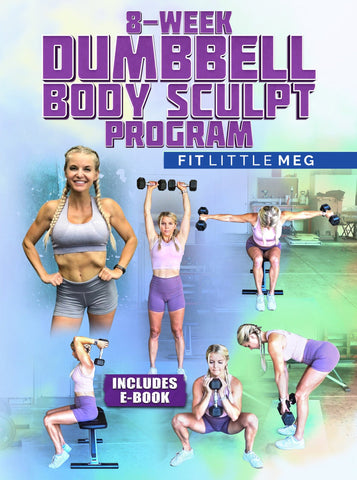Kettlebell Swings with a Dumbbell
Kettlebell swings with a dumbbell offer an alternative approach to the traditional kettlebell swing exercise, allowing individuals to achieve many of the same benefits while utilizing a common piece of gym equipment, the dumbbell. This adaptation can be especially useful for those who don't have access to kettlebells or prefer to work with dumbbells.
To perform kettlebell swings with a dumbbell, you'll start with a single dumbbell that has enough weight to provide adequate resistance for your fitness level. It's essential to ensure that the dumbbell weight is challenging but manageable, as proper form and control are key to performing this exercise safely and effectively.
Similarities
The technique for dumbbell swings closely mirrors that of kettlebell swings. Begin by placing the dumbbell on the ground in front of you. Stand with your feet shoulder-width apart and your toes slightly turned out. This stance provides a stable base for the movement. Keep your back straight, chest up, and shoulders pulled back. Engage your core muscles to maintain stability and protect your lower back.
Next, bend at your hips and knees to lower your body and reach down to grasp the dumbbell handle with both hands. Ensure your grip is secure, with your palms facing your body. Your arms should be fully extended, and your shoulders should be relaxed, not hunched up towards your ears.
The initiation of the swing is similar to the kettlebell swing: push your hips back, allowing your torso to tilt forward slightly while maintaining a neutral spine. Keep your head in line with your spine, and shift your weight slightly onto your heels. This hip hinge is a critical part of the movement and helps engage the posterior chain muscles.
Now comes the dynamic phase of the exercise. With a powerful hip thrust, stand up explosively while simultaneously swinging the dumbbell upward. Your arms should remain straight throughout the movement, with the primary source of power coming from your hips and glutes. Visualize driving your hips forward and contracting your glutes at the top of the swing.
When you reach the peak of the swing, the dumbbell should be at chest height, and your arms should be parallel to the ground. Your body should form a straight line from head to heels, emphasizing a strong and stable core. Avoid overextending your back, which can lead to discomfort or injury.
As the dumbbell begins to descend, hinge at your hips again, allowing it to swing back between your legs. Keep your knees slightly bent, and your weight should shift back onto your heels during this phase. Maintain a straight back, and ensure that the dumbbell swings between your legs, avoiding any contact with your body.
Repeat this fluid swinging motion for the desired number of repetitions, typically around 15 to 20 swings for a set. Focus on maintaining proper form throughout, engaging your core for stability, and using your hips and glutes to generate power. As you become more proficient with the movement, you can gradually increase the weight of the dumbbell to further challenge yourself and progress in your fitness journey.
Kettlebell Swings are an extremely easy-to-learn, beneficial exercise that everyone should incorporate into their workout, whether it’s 100 kettlebell swings, 50 kettlebell swings, 200 kettlebell swings, 300 kettlebell swings, or even 10000 kettlebell swings you can build entire workout routines based around kettlebell swings!
In summary, kettlebell swings with a dumbbell provide an effective way to target the posterior chain, engage multiple muscle groups, and improve strength and endurance. When performed with proper form and control, this exercise can offer similar benefits to traditional kettlebell swings, making it a valuable addition to your fitness routine, especially if you have limited equipment options.
Did you find the blog helpful? If so, consider checking out other guides:
- Kettlebell Swings
- What Do Kettlebell Swings Work?
- Benefits of Kettlebell Swings
- Kettlebell Swing Form
- How to Do Kettlebell Swings
- Alternatives to Kettlebell Swings
- How Many Kettlebell Swings
- Kettlebell Pullover
- Kettlebell Pull Exercises
- Kettlebell High Pull Muscles Worked
- Pull Throughs and Kettlebell Swings
- The Kettlebell Plank Pull Through
- Kettlebell Swing Push or Pull
- Kettlebell Goblet Squat
- Kettlebell Front Squat





